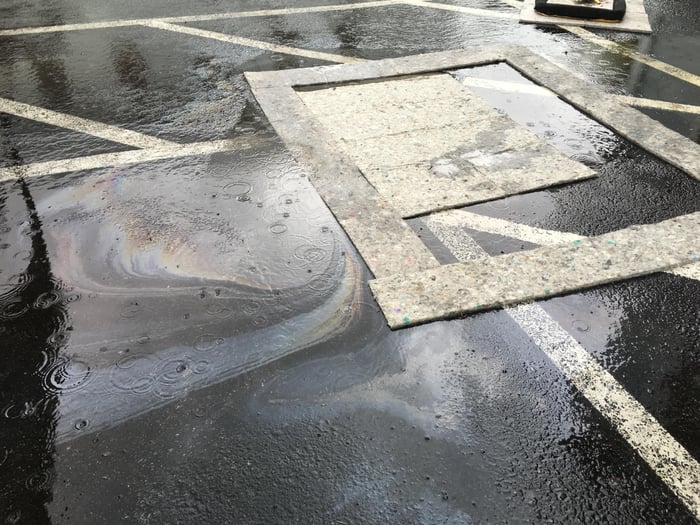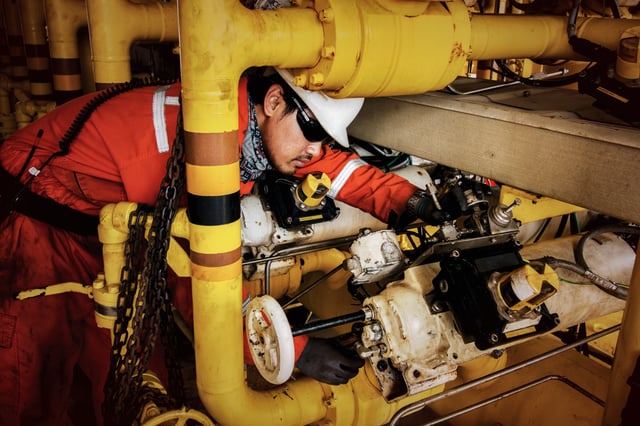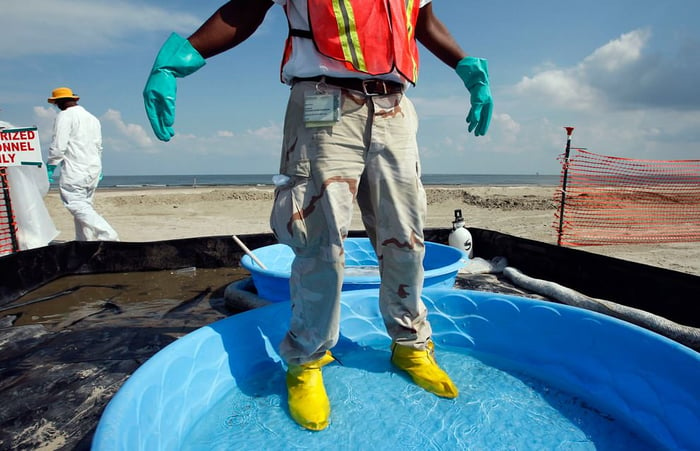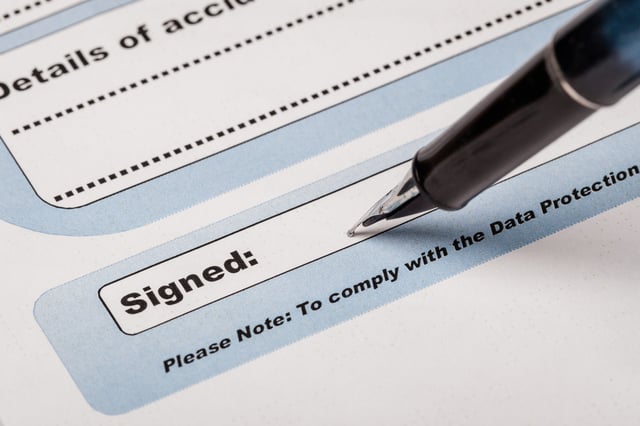When it comes to an oil or fuel leak or spill, they tend to have the worst timing.
Of course not.
Spills happen when you’re up against a tight deadline, a crew member calls out sick or your fleet vehicles look like they’ve been through a hurricane. This is when a simple spill response turns into a major problem.
That’s why it’s important to make sure everyone on site knows exactly what to do when responding to an oil spill, especially in remote locations.
Spill Response: Real Solutions for Real Life Problems
1. Assess the Risk
Problem: Before everyone jumps into action, it’s important to assess the situation. Look for potential hazards, health risks, environmental concerns and danger zones. That seems self-explanatory. But, in tense situations, common sense has an interesting way of flying right out the window. The first reaction is to panic. That's the last thing you want in a dangerous situation. Even veteran workers can get swept up in the turmoil and miss critical steps.
Solution: Make training your top priority. It’s not enough to have one person as a designated first responder. That’s a great place to start. There’s a way to take preparedness a step further. Every worker on your team should be aware of risk factors. Crews need to know how to protect themselves and others before responding to the spill.
Since 80% of all outdoor spills are oil or fuel, you can focus your efforts on teaching how to respond to these spills. They must be able to identify risk factors and know the steps of your company’s spill prevention control and countermeasure plan (SPCC).
Every step is important when responding to an oil or fuel spill, so be sure not to skip any. Additionally, trained professionals should handle hazmat spills. Teach non-hazmat personnel to call emergency response and then get out of harm's way until they arrive.
2. Protect Yourself

Problem: One of the biggest challenges for remote workers is having all the equipment they need—where and when they need it. And, having access to their personal protective equipment (PPE) is no different.
The other big problem is the lack of training on how to use certain safety equipment. For some workers, the only time they’re required to wear a respirator is in an emergency situation. It’s not enough for workers to know they should wear a respirator. They should also know why they need to wear it and how.
One example of needing a respirator: burning crude oil releases sulfur dioxide.
Solution: Educate workers to identify hazards. Train them on the correct ways to protect themselves. Teach them how to correctly use and maintain any safety equipment they have, like respirators, gloves and goggles.
Don’t forget to point out equipment limitations and other small details that they might not know. Especially if workers are new and inexperienced. They may not have that valuable industry knowledge that comes with time. Give them the tips and advice they need. That way, workers aren’t fumbling with PPE instead of responding to the spill.
3. Confine the Spill

Problem: Once the first two steps are observed, the spill can then be confined. The problem here is pretty easy to understand. Usually, the people onsite for the initial spill are not spill response contractors.
They are construction workers, linemen, utility workers, maintenance technicians or equipment operators. Undoubtedly, these workers are talented at their jobs. But these folks are not necessarily spill cleanup experts.
You can train and educate workers until you’re blue in the face. However, if they don’t have the equipment they need—they’re fighting a losing battle.
Solution: The sooner a spill is contained, the better. The benefits of quick containment are:
• less potential for environmental damage
• less chance of an out of control spill
• less time spent cleaning up a spill
Innovative spill control materials are 400% more compact than traditional sorbents. And they're designed to prevent the spill from spreading until help arrives.
Governing bodies like OSHA and the EPA state that the entity responsible for the spill is the one responsible for the cleanup. When it comes to cleanup costs, it’s easier and less expensive to be prepared for a spill.

Depending on the location and size of the spill, cleanup costs can range from a few thousand to hundreds of thousands of dollars—or more. We usually only hear about major spills, but small leaks and drips can do more damage over time. In fact, more than 80% of oil spills happen on land due to vehicle accidents or equipment failures.
What’s the alternative? Better get some tarps, buckets and shovels ready to dig up contaminated soil if you’d like to find out. The consequences of not having the right equipment far outweigh any cost cutting measure.
4. Stop the Source

Problem: Every oil leak or spill is different. Whether a small leak sprouted from a worn gasket or you have a hole in a transformer, the goal is to stop the leak source immediately. You’re probably thinking that sounds a little like common sense. But, you’d be surprised how many missteps people make in an emergency situation.
Solution: There are many solutions for stopping the source of oil. Sometimes it’s simply turning a drum upright, plugging a hole and tightening a valve. Other times it requires getting creative with duct tape, epoxy sticks, tourniquets and pipe wraps. Depending on the severity of the leak, you may even have to use complex caps or welds to stop the source of larger leaks.
If you’re serious about your people being ready for any spill, train them. Train them to know the common causes of oil leaks and how to repair them. And, make sure there are a variety of solutions on fleet vehicles to tackle any spill.
5. Evaluate and Cleanup

Problem: Now that the spill has been contained and oil is no longer gushing about, the clean up can begin. Since your team members are probably not spill cleanup experts, you’ll want to make sure they follow your spill cleanup plan. It’s not a good idea to start using any old rags or vacuums to get the job done. And, it’s important to make sure your crew sticks to respective company guidelines.
Solution: Review your company's cleanup policies. Many organizations have specific rules for dealing with spill situations. And, it’s not a good idea to ignore them. SPCC plans are created after a fair amount of research. You must consider the environmental factors, safety risks, and legal concerns of oil spill cleanup.
An often-overlooked risk is using wet/dry vacuums or pumps to clean up hazardous or flammable fluids. These kinds of equipment should be carefully matched to the spill. Workers should also continuously monitor air quality for health and safety risks.
Some companies only allow their crews to clean up spills up to a specific amount. After a spill reaches a certain limit, it’s time to call in the professionals. Not following these guidelines can land a company in hot water, so review often.
6. Decontaminate

Problem: You’ve contained the spill, stopped the source and cleaned the mess. Before you give a sigh of relief, don’t forget one major step. Decontamination.
Anything that was involved in the spill from the beginning to the end must be addressed. This includes the site, personnel, equipment and materials. Before you or your workers dispose of any of these items, make sure to follow your decon plan.
Solution: The first thing to do is make sure that everyone is protected from the hazards that exist. Remember, not all hazards can be seen. So, always proceed with caution.
Workers must remember to use proper PPE to avoid injury from exposure, among other things. Also common in these situations? Heat stress, dehydration, limited air movement, and other health risks. So, make sure workers are wearing the right safety apparel and take breaks.
It’s not only the disposal of sorbent materials that must happen. Contaminated soil or water sources also need proper handling.
a. Set up decon station uphill and upwind from a hot zone.
b. Decon station should be near water and electricity.
c. Be sure to have emergency medical units nearby.
d. Use barrier tape, tarps and sorbents to avoid spreading.
e. Clearly identify work zones.
f. Treat water used during decon as hazardous waste.
g. Institute primary and secondary decontamination wash and rinse stations.
h. Provide disposal areas for contaminated articles for decon and disposal.
i. Establish an area for removal of rain suits, boots and PPE for cleaning and inspection.
7. Report

Problem: We’ve said that people responding to the spill aren’t usually spill cleanup professionals. It’s important that workers be aware of the paperwork that needs to be filled out following a spill. There are local and federal regulations that need to be met. And, these can vary by state.
Not properly reporting a spill can lead to additional fees and legal costs. Not only that, but it can have serious impacts on your company’s reputation.
Solution: Set aside time to review and complete common types of reports. These include medical reports, environmental agency reports, company reports and state and federal paperwork.
The reporting phase of responding to an oil spill is just as important as any other item on this list. Don’t skip this important step, or it could come back to bite you!
Give your team a fighting chance with training and materials to tackle any oil or fuel leak, drip or spill.
No oil or fuel spill is the same. That’s why it’s so important to be ready for anything. No one wants to see their crew running around in a panic when a spill happens. And, a spill will happen, so be prepared. Have materials and tools on hand where and when you need them. And, make sure your team understands the steps to immediate spill response.
If you have any questions on finding the right spill control products that meet your needs, just ask. Give us your crappiest job and we will help you find a better way.








